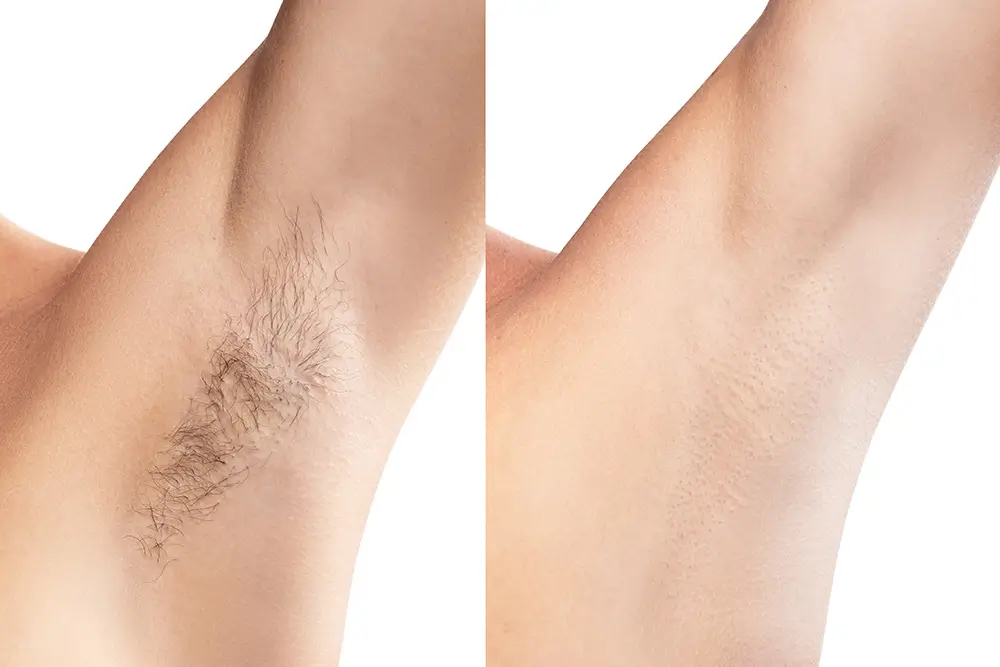
The Science Behind Laser Hair Removal
Understanding laser hair removal involves an amalgamation of diverse fields of study. Quantum and optical physics, the intricacies of hair growth cycles in biology, and the historical and contemporary reasons behind depilation (hair removal) all play a role in this fascinating cosmetic technique. The study of Laser Hair Removal not only highlights the correlation between societal norms and scientific advancement but also offers a captivating lens through which to appreciate the intersection of engineering within the realm of beauty culture.
The Basics of Laser Hair Removal
The acronym “laser” stands for “Light Amplification by Stimulated Emission of Radiation.” Essentially, a laser is a device designed to emit light with a specific wavelength. The inception of the modern laser can be credited to Charles Townes and Arthur Schawlow in 1957. Townes had previously explored a method for amplifying electromagnetic waves, although he initially used microwave radiation rather than visible or infrared radiation. While the theoretical foundation for lasers, involving the excitation of atoms in pure gases or solids to generate specific light wavelengths, had been established for some time, Schawlow successfully translated this theory into practical application. The earliest laser consisted of a lengthy and slender cavity housing the desired atoms, with mirrored surfaces at both ends. These mirrors reflected light rays, prompting more atoms to become energized and subsequently emit energy at the targeted wavelength.
Central to a contemporary laser is the Gain Medium, a substance capable of amplifying specific light wavelengths. Other integral components of a laser system encompass a means to supply energy to the Gain Medium and a reflector or alternative mechanism for providing optical feedback. When energy is introduced into the Gain Medium, electrons within the medium become excited, transitioning to higher energy orbitals before descending to lower ones, releasing light as a resultant byproduct. The purity of the Gain Medium has a direct impact on the spectrum’s quality, with a high-quality laser emitting an exceptionally narrow spectrum. This narrow spectrum is visually represented in Figure 3, which illustrates that the spectrum of a helium-neon laser is confined to a minute range of frequencies, centered around 632 nanometers.
Selective Photothermolysis
The science behind laser hair removal hinges on a concept called selective photothermolysis. This term describes the specific targeting of tissue while avoiding damage to surrounding skin. In the case of laser hair removal, the laser emits a wavelength of light that is absorbed by the melanin in the hair but is less absorbed by the surrounding skin. This discrepancy in absorption allows for the precise destruction of the hair follicle while minimizing the risk of damage to the skin.
The Melanin Factor
Melanin is the key player in this process. It gives hair its color and acts as a chromophore, absorbing light energy. The absorbed light energy is then converted into heat, causing thermal damage to the hair follicle. This thermal damage inhibits the follicle’s ability to grow new hair.
Choosing the Right Wavelength
The choice of laser wavelength is vital in laser hair removal, and different wavelengths are suited for various skin and hair types. For instance, Nd:YAG lasers are effective for darker skin tones, as they have a longer wavelength that can penetrate deeply into the skin without harming the surrounding tissue. On the other hand, alexandrite lasers are better suited for lighter skin tones with darker hair.
The Hair Growth Cycle
Laser hair removal effectiveness is closely tied to the hair growth cycle. Hair goes through various stages, including anagen (active growth), catagen (transitional), and telogen (resting). The laser primarily targets hair in the anagen stage, as this is when the hair follicle contains the most melanin. Multiple sessions are necessary to target hair in the optimal growth phase.
Post-Treatment Care
After a laser hair removal session, you may experience some redness or minor discomfort. It’s essential to follow post-treatment care instructions provided by your technician, including avoiding sun exposure and using soothing skincare products to minimize any temporary side effects.
Conclusion
The cosmetic procedure of laser hair removal has probably made a small impact in the lives of today’s physicists – the intellectual successors of the scientists and engineers who discovered the theories and technologies that make laser hair removal possible. However, laser hair removal has – unintentionally – helped to shape the study of optical physics. The use of lasers in medical applications continues to grow, from minimally invasive surgeries to LASIK to laser fat removal. The laser hair removal industry’s funding and interest in the science of lasers for biological applications contributed at least a small part to these discoveries.
In the end, society decides what scientific research survives, which projects receive funding and which fade into obscurity. In order to be successful, engineers must create things that make life easier, things that people desire. The continuing story of laser hair removal shows us that people want the same thing they desired thousands of years ago – to conform to a standard of beauty that few can achieve without the help of the unintentional consequences of physics.
